(~6:18)
とんでも無いドローンが開発されてしまったと、
ね、ちょっと、闇の者達の間で話題なんですよ。
何かと申しますと、
ドローンでね、雲の中に突っ込ませるじゃないですか、
そのドローンから50度の熱が発せられるらしいんですよ。
そして、ね、土砂降りを起こす事が出来る。っていう、
これ、正に、気象のあれが、実用化されてる、
もうね、実用化されてるんですよね。
土砂降りを降らす事が出来ると!
これね、現在は小っちゃいモノかもしれないですけど、
例えばですね、権力を持ってる人が、本気出したら、
この町を沈める事くらい、余裕なんじゃない、
ってちょっと思ったんですよね。
世界中にはね、例えば、HARRPであるとか、ね、
なんか、ヤバそうなモノがある訳じゃないですか、
ついに、表の、ニュースにも、こういったドローンでね、
出来るって事が判ってきちゃいましたんで、
これね、もう、何やっても無駄じゃ~ん、って事が
判って来ましたんでね、投げやりな人生に邁進していく
可能性あるんでね、あの、止めたいと思いますね。
待て、人生はビューティフルという事ででですね、
~


【下念司ニュースの猫側】わぴこの元気予報!!銀座辺りがやばい気がする予言!!
2021/07/23
https://www.youtube.com/watch?v=0agwoKhxdXA
おみそちゃんねる【世界どん深闇ニュース】











#東京五輪 #東京五輪セレモニー #東京五輪怖い
【驚愕】2020東京五輪セレモニーに隠された暗号
2021/08/15
https://www.youtube.com/watch?v=dT00dQp18QM
ナティの考察牧場
UAE tests the use of electric charge drones in cloud-seeding operations to make rain
https://gulfnews.com/uae/uae-tests-the-use-of-electric-charge-drones-in-cloud-seeding-operations-to-make-rain-1.1615461513981
Published:
March 11, 2021 14:03
Evangeline Elsa, Social Media Editor
NCM drone testing

UAE and UK experts work to mitigate the risk of water stress on regions around the world
The National Center of Meteorology has launched a UAV
campaign to test the effectiveness of electric charge emission in
enhancing rainfall
Image Credit:NCM
Look: UAE shoppers learn to wait for gold price dip
10 things you can't miss this weekend in the UAE
Photos: Gulf News readers share pictures of
the beautiful parks and beaches in Dubai Miracle Garden and La Mer
Jumeirah
UAE public holidays 2021: All the public and school holidays left to look forward to this year
UAE: Can I take the COVID-19 vaccine before I travel?
14 Easy swaps for a more sustainable lifestyle in the UAE
The UAE's National Center of Meteorology is conducting tests to see
whether electricity can be used during cloud-seeding operations to
enhance rainfall over the country, and mitigate water stress in arid
regions.
Alya Al Mazroui, Director of the UAE Research Program for Rain Enhancement Science (UAEREP), explained to Gulf News how clouds could be given a helpful jolt of electric charge to increase much-needed rainfall in the country.
"With the help of Unmanned Arial Vehicles (UAVs), the UAE's NCM along
with a team of national and international experts are conducting
research to test the effectiveness of delivering electric charge into
clouds to improve rainfall," she said.
"The UAE is conducting this campaign with the support of experts from
the NCM, UAEREP and several national and international research and
academic organisations including the University of Reading and
University of Bath in the United Kingdom. The campaign is led by Giles
Harrison, Professor of Atmospheric Physics at the University of Reading
in the United Kingdom and a second cycle program awardee," Al Mazroui
added.
The study is based on an award-winning research proposal by scientists at the University of Reading in 2017.
How does it work?
She explained: "We are using UAVs or drones to conduct these
experiments in the UAE. The UAVs are equipped with a payload of electric
charge emission instruments and customized sensors. These drones will
fly at low altitudes and deliver an electric charge to air molecules."
The study investigates how charge modifies the growth of tiny water
droplets into larger drops that fall as rain. As clouds naturally
carry positive and negative charges, altering the size of the charges
could cause the water droplets to grow and merge, thus producing rain.
"The UAVs fly at low altitudes around a meteorological mast
instrumented with an electric field mill. Charge is emitted by the UAV
and detected at the surface by the electric field mill," according to
the UAEREP.
The UAVs were developed and tested in the UK, Findland and the UAE.
According to UAEREP, the effectiveness is tested on clear air days,
and once conditions permit, on days with light fog with the presence of
dust particles in the atmosphere, which is expected to lead to more
highly charged conditions.
Since the use of drones needs specific permissions and space, the
experiments are taking place at SANAD Academy, a flight school in Dubai.
How is it different from traditional cloud-seeding?
The charge emission technology uses a small, lightweight vehicle to
deliver charge into the clouds instead of traditional cloud seeding
payloads. This method does not involve the emission of any solid
particles into clouds such as silver iodide or salt.
During traditional cloud seeding flights in the UAE, natural salts or
hydroscopic agents are shot into clouds to enhance rainfall, Alya
Al Mazroui explained.
How cloud-seeding is done in the UAE
The UAE was one of the first countries in the Arabian Gulf
to adopt cloud seeding technology. The programme initially began at the
end of 1990, but by the end of 2000, the fully-fledged project was
carried out in cooperation with a number of organisations and
institutes, including the US space agency Nasa.
The NCM’s cloud
seeding department uses a sophisticated weather surveillance radar
(WSR), which monitors the atmospheric pressure around the clock.
The NCM first gathers required information through weather satellites, pictures and the WSR
Cloud
seeding missions are only dispatched if rain-bearing cumulus cloud
formations are seen over the country. Once they are identified, the NCM
quickly launches aircrafts carrying salt crystals – mixed with
magnesium, sodium chloride and potassium chloride.
UAE cloud seeding operation

Cloud seeding missions are only dispatched if rain-bearing cumulus cloud formations are seen over the country.
Reaching over the clouds, the pilots shoot the flares
that inject the salts in the upper coldest portion of the clouds. The
process helps develop water droplets that gradually grow in size by
colliding with each other and that’s what the scientists called the
coalescence. These droplets then start dropping and form the rain.
What is cloud seeding?
The reason there's so much rain in the UAE
181031 cloud seeding

Infographic: How cloud-seeding is done in the UAE
However, with the charge emission technology method, no solid
particles are shot into the clouds. Instead, the UAV emits positively
and negatively charged ions, which will attach to cloud droplets and
aerosol or dust particles which are already present in the atmosphere.
"Charge is expected to modify the behaviour of droplets and particles
(such as helping droplets grow), which in turn may influence rainfall
processes," according to the UAEREP.
The nature of charge emission technology allows the use of a small and lightweight vehicle.

The nature of charge emission technology allows the use of a small and lightweight vehicle.
Image Credit: UAERE
"The other aspect which is different is the platform used to deliver
the charge: the use of UAVs provides a cost effective and flexible
method of delivering charge to cloud layer altitudes. The nature of
charge emission technology means that a small and lightweight platform
can be used, unlike traditional cloud seeding payloads which require
much larger aircraft," an official added.
UAE: A global hub for rain enhancement research
Commenting on the importance of the research, Alya Al Mazroui said:
“...we seek to ensure that their projects are geared towards addressing
the challenges facing water security in arid regions. Through our
partnerships with prominent scientists and research institutions across
the globe, the program is accelerating the development of practical
innovative solutions in the field of rain enhancement science.”
Dr Abdulla Al Mandous, Director of the National Center of Meteorology
(NCM) and President of the Regional Association II (Asia), said: “The
NCM and the UAE Research Program for Rain Enhancement Science are
continuing to support the awardee projects to contribute to the
development of viable solutions for the growing global water stress.
Such efforts are crucial in driving and encouraging innovation in
applied scientific research to advance global rain enhancement capacity.
With the continued support of our wise leadership, NCM is committed to
mitigating the risk of water stress on arid and semi-arid regions around
the world, while enhancing the country’s status as global hub for rain
enhancement research.”
https://gulfnews.com/uae/uae-tests-the-use-of-electric-charge-drones-in-cloud-seeding-operations-to-make-rain-1.1615461513981

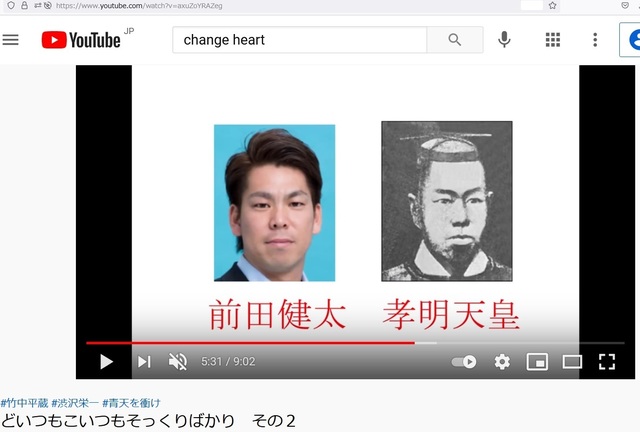
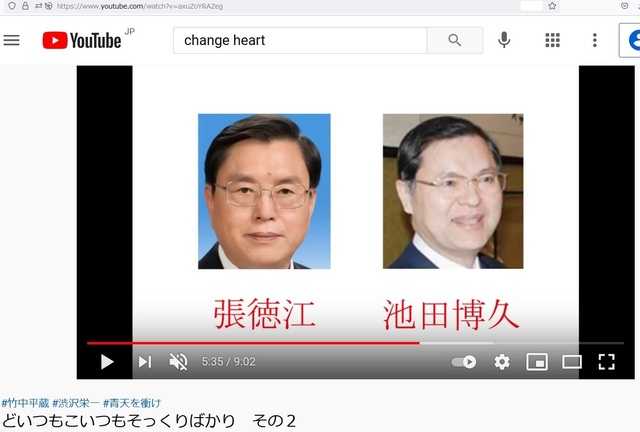
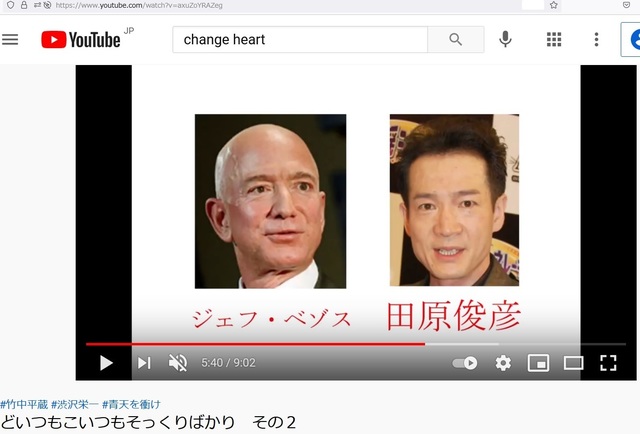
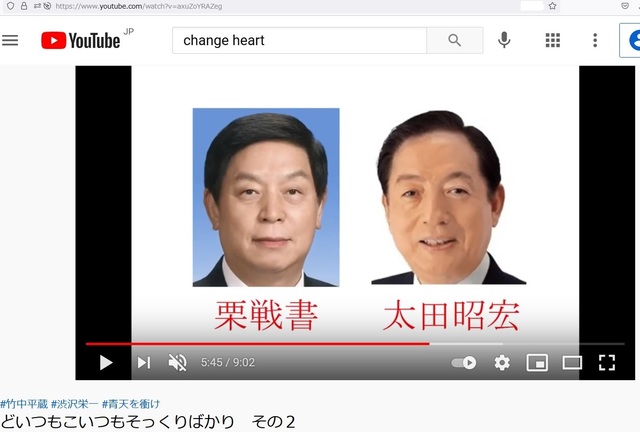






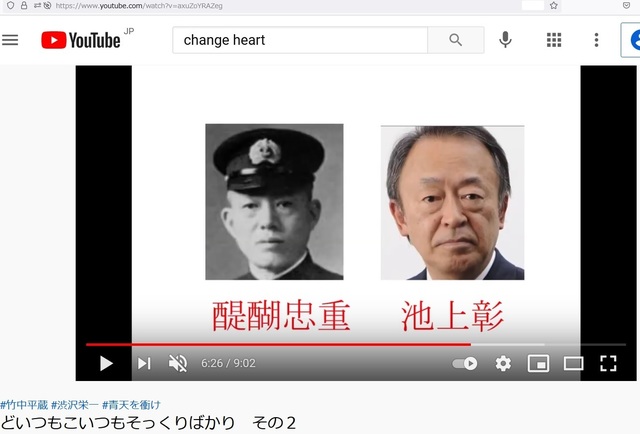






















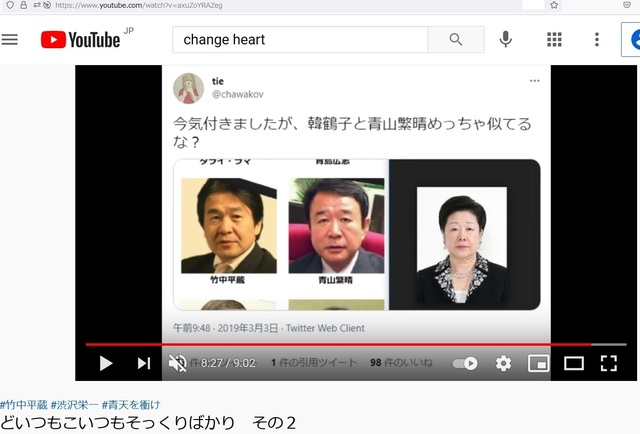




#竹中平蔵 #渋沢栄一 #青天を衝け
どいつもこいつもそっくりばかり その2
2021/05/16
https://www.youtube.com/watch?v=axuZoYRAZeg
change heart
とんでも無いドローンが開発されてしまったと、
ね、ちょっと、闇の者達の間で話題なんですよ。
何かと申しますと、
ドローンでね、雲の中に突っ込ませるじゃないですか、
そのドローンから50度の熱が発せられるらしいんですよ。
そして、ね、土砂降りを起こす事が出来る。っていう、
これ、正に、気象のあれが、実用化されてる、
もうね、実用化されてるんですよね。
土砂降りを降らす事が出来ると!
これね、現在は小っちゃいモノかもしれないですけど、
例えばですね、権力を持ってる人が、本気出したら、
この町を沈める事くらい、余裕なんじゃない、
ってちょっと思ったんですよね。
世界中にはね、例えば、HARRPであるとか、ね、
なんか、ヤバそうなモノがある訳じゃないですか、
ついに、表の、ニュースにも、こういったドローンでね、
出来るって事が判ってきちゃいましたんで、
これね、もう、何やっても無駄じゃ~ん、って事が
判って来ましたんでね、投げやりな人生に邁進していく
可能性あるんでね、あの、止めたいと思いますね。
待て、人生はビューティフルという事ででですね、
~


【下念司ニュースの猫側】わぴこの元気予報!!銀座辺りがやばい気がする予言!!
2021/07/23
https://www.youtube.com/watch?v=0agwoKhxdXA
おみそちゃんねる【世界どん深闇ニュース】











#東京五輪 #東京五輪セレモニー #東京五輪怖い
【驚愕】2020東京五輪セレモニーに隠された暗号
2021/08/15
https://www.youtube.com/watch?v=dT00dQp18QM
ナティの考察牧場
UAE tests the use of electric charge drones in cloud-seeding operations to make rain
https://gulfnews.com/uae/uae-tests-the-use-of-electric-charge-drones-in-cloud-seeding-operations-to-make-rain-1.1615461513981
Published:
March 11, 2021 14:03
Evangeline Elsa, Social Media Editor
NCM drone testing

UAE and UK experts work to mitigate the risk of water stress on regions around the world
The National Center of Meteorology has launched a UAV
campaign to test the effectiveness of electric charge emission in
enhancing rainfall
Image Credit:NCM
Look: UAE shoppers learn to wait for gold price dip
10 things you can't miss this weekend in the UAE
Photos: Gulf News readers share pictures of
the beautiful parks and beaches in Dubai Miracle Garden and La Mer
Jumeirah
UAE public holidays 2021: All the public and school holidays left to look forward to this year
UAE: Can I take the COVID-19 vaccine before I travel?
14 Easy swaps for a more sustainable lifestyle in the UAE
The UAE's National Center of Meteorology is conducting tests to see
whether electricity can be used during cloud-seeding operations to
enhance rainfall over the country, and mitigate water stress in arid
regions.
Alya Al Mazroui, Director of the UAE Research Program for Rain Enhancement Science (UAEREP), explained to Gulf News how clouds could be given a helpful jolt of electric charge to increase much-needed rainfall in the country.
"With the help of Unmanned Arial Vehicles (UAVs), the UAE's NCM along
with a team of national and international experts are conducting
research to test the effectiveness of delivering electric charge into
clouds to improve rainfall," she said.
"The UAE is conducting this campaign with the support of experts from
the NCM, UAEREP and several national and international research and
academic organisations including the University of Reading and
University of Bath in the United Kingdom. The campaign is led by Giles
Harrison, Professor of Atmospheric Physics at the University of Reading
in the United Kingdom and a second cycle program awardee," Al Mazroui
added.
The study is based on an award-winning research proposal by scientists at the University of Reading in 2017.
How does it work?
She explained: "We are using UAVs or drones to conduct these
experiments in the UAE. The UAVs are equipped with a payload of electric
charge emission instruments and customized sensors. These drones will
fly at low altitudes and deliver an electric charge to air molecules."
The study investigates how charge modifies the growth of tiny water
droplets into larger drops that fall as rain. As clouds naturally
carry positive and negative charges, altering the size of the charges
could cause the water droplets to grow and merge, thus producing rain.
"The UAVs fly at low altitudes around a meteorological mast
instrumented with an electric field mill. Charge is emitted by the UAV
and detected at the surface by the electric field mill," according to
the UAEREP.
The UAVs were developed and tested in the UK, Findland and the UAE.
According to UAEREP, the effectiveness is tested on clear air days,
and once conditions permit, on days with light fog with the presence of
dust particles in the atmosphere, which is expected to lead to more
highly charged conditions.
Since the use of drones needs specific permissions and space, the
experiments are taking place at SANAD Academy, a flight school in Dubai.
How is it different from traditional cloud-seeding?
The charge emission technology uses a small, lightweight vehicle to
deliver charge into the clouds instead of traditional cloud seeding
payloads. This method does not involve the emission of any solid
particles into clouds such as silver iodide or salt.
During traditional cloud seeding flights in the UAE, natural salts or
hydroscopic agents are shot into clouds to enhance rainfall, Alya
Al Mazroui explained.
How cloud-seeding is done in the UAE
The UAE was one of the first countries in the Arabian Gulf
to adopt cloud seeding technology. The programme initially began at the
end of 1990, but by the end of 2000, the fully-fledged project was
carried out in cooperation with a number of organisations and
institutes, including the US space agency Nasa.
The NCM’s cloud
seeding department uses a sophisticated weather surveillance radar
(WSR), which monitors the atmospheric pressure around the clock.
The NCM first gathers required information through weather satellites, pictures and the WSR
Cloud
seeding missions are only dispatched if rain-bearing cumulus cloud
formations are seen over the country. Once they are identified, the NCM
quickly launches aircrafts carrying salt crystals – mixed with
magnesium, sodium chloride and potassium chloride.
UAE cloud seeding operation

Cloud seeding missions are only dispatched if rain-bearing cumulus cloud formations are seen over the country.
Reaching over the clouds, the pilots shoot the flares
that inject the salts in the upper coldest portion of the clouds. The
process helps develop water droplets that gradually grow in size by
colliding with each other and that’s what the scientists called the
coalescence. These droplets then start dropping and form the rain.
What is cloud seeding?
The reason there's so much rain in the UAE
181031 cloud seeding

Infographic: How cloud-seeding is done in the UAE
However, with the charge emission technology method, no solid
particles are shot into the clouds. Instead, the UAV emits positively
and negatively charged ions, which will attach to cloud droplets and
aerosol or dust particles which are already present in the atmosphere.
"Charge is expected to modify the behaviour of droplets and particles
(such as helping droplets grow), which in turn may influence rainfall
processes," according to the UAEREP.
The nature of charge emission technology allows the use of a small and lightweight vehicle.

The nature of charge emission technology allows the use of a small and lightweight vehicle.
Image Credit: UAERE
"The other aspect which is different is the platform used to deliver
the charge: the use of UAVs provides a cost effective and flexible
method of delivering charge to cloud layer altitudes. The nature of
charge emission technology means that a small and lightweight platform
can be used, unlike traditional cloud seeding payloads which require
much larger aircraft," an official added.
UAE: A global hub for rain enhancement research
Commenting on the importance of the research, Alya Al Mazroui said:
“...we seek to ensure that their projects are geared towards addressing
the challenges facing water security in arid regions. Through our
partnerships with prominent scientists and research institutions across
the globe, the program is accelerating the development of practical
innovative solutions in the field of rain enhancement science.”
Dr Abdulla Al Mandous, Director of the National Center of Meteorology
(NCM) and President of the Regional Association II (Asia), said: “The
NCM and the UAE Research Program for Rain Enhancement Science are
continuing to support the awardee projects to contribute to the
development of viable solutions for the growing global water stress.
Such efforts are crucial in driving and encouraging innovation in
applied scientific research to advance global rain enhancement capacity.
With the continued support of our wise leadership, NCM is committed to
mitigating the risk of water stress on arid and semi-arid regions around
the world, while enhancing the country’s status as global hub for rain
enhancement research.”
https://gulfnews.com/uae/uae-tests-the-use-of-electric-charge-drones-in-cloud-seeding-operations-to-make-rain-1.1615461513981







































#竹中平蔵 #渋沢栄一 #青天を衝け
どいつもこいつもそっくりばかり その2
2021/05/16
https://www.youtube.com/watch?v=axuZoYRAZeg
change heart










※コメント投稿者のブログIDはブログ作成者のみに通知されます